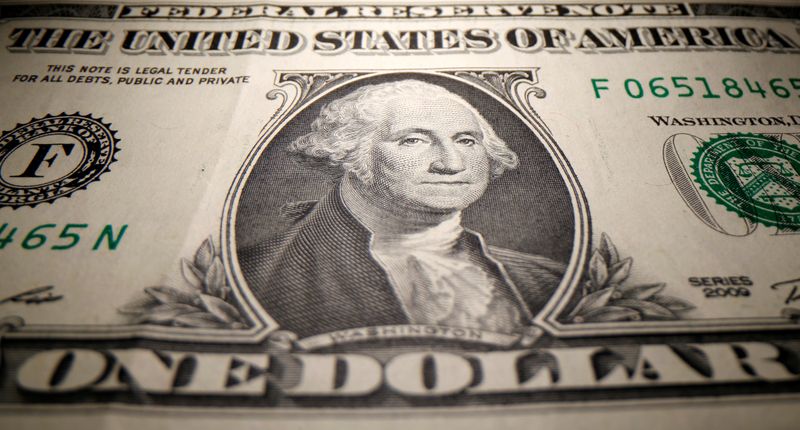By Gertrude Chavez-Dreyfuss
NEW YORK (Reuters) – The dollar declined to a two-month low against a major currency index on Tuesday after Federal Reserve officials signaled that the U.S. central bank is near the end of its tightening cycle, while sterling hit a 15-month high after pay growth exceeded expectations.
Against the yen, the dollar fell to a four-week trough of 140.17. It last traded down 0.7% at 140.385 yen. The U.S. currency also plunged to its lowest in 2-1/2 years versus the Swiss franc, and was last at 0.8797 francs, down 0.6%.
Several Fed officials said on Monday the central bank would likely need to raise interest rates further to bring down inflation but the end to its current monetary policy tightening cycle was getting close.
The comments knocked the greenback to a two-month low of 101.66 against a basket of currencies, as traders pared back their expectations about how much further U.S. rates may have to rise. The dollar index was last down 0.3% at 101.65.
“Friday’s NFP (nonfarm payrolls) report revealed, for the first time since COVID, potential cracks in the U.S. labor market, hinting that the Fed may have to settle on just a single rate hike in the second half of the year,” said Matt Weller, global head of research at Forex.com and City Index.
The June non-farm payrolls report showed the fewest job gains in 2-1/2 years.
“Meanwhile, (Tuesday) morning’s strong UK wage growth data and the ongoing short squeeze in the Japanese yen are driving two of the greenback’s biggest rivals higher as traders anxiously await (Wednesday’s) U.S. CPI report,” Weller added.
Expectations are for core U.S. consumer prices to have risen 5% on an annual basis in June. The CPI data should provide more clarity on the Fed’s progress in its fight against stubbornly high inflation.
“Market participants should remember that U.S. data releases still have the capacity to shock: if the core or ‘supercore’ inflation measures surprise to the upside, front-end yields could leg higher once again, and the dollar might stage a surprising rebound,” said Karl Schamotta, chief market strategist at Corpay in Toronto.
EUROPEAN CURRENCIES STRENGTHEN
Sterling hit a near 15-month high of $1.2934 after British wage growth hit a joint record high, heaping pressure on the Bank of England to tighten policy further to bring inflation under control. It was last up 0.6% at $1.2930.
The pound has been rallying on a stronger economy and aggressive repricing of expectations for tighter BoE policy, analysts said.
The euro rose to two-month peaks of $1.1027, and last changed hands at $1.1006, up slightly in the day.
Other European currencies were also strong, with the Norwegian crown hitting a near three-month high and the Swedish crown at a two-week peak against the dollar.
In Japan, the yen has risen more than 3% from a seven-month low touched last month, when it weakened past the closely watched 145 per dollar level that put traders on high alert for possible intervention from Japanese authorities.
Elsewhere, the Australian dollar was last up 0.2% at US$0.6697, while the New Zealand currency was down 0.3% at US$0.6197 ahead of the Reserve Bank of New Zealand policy decision on Wednesday.



